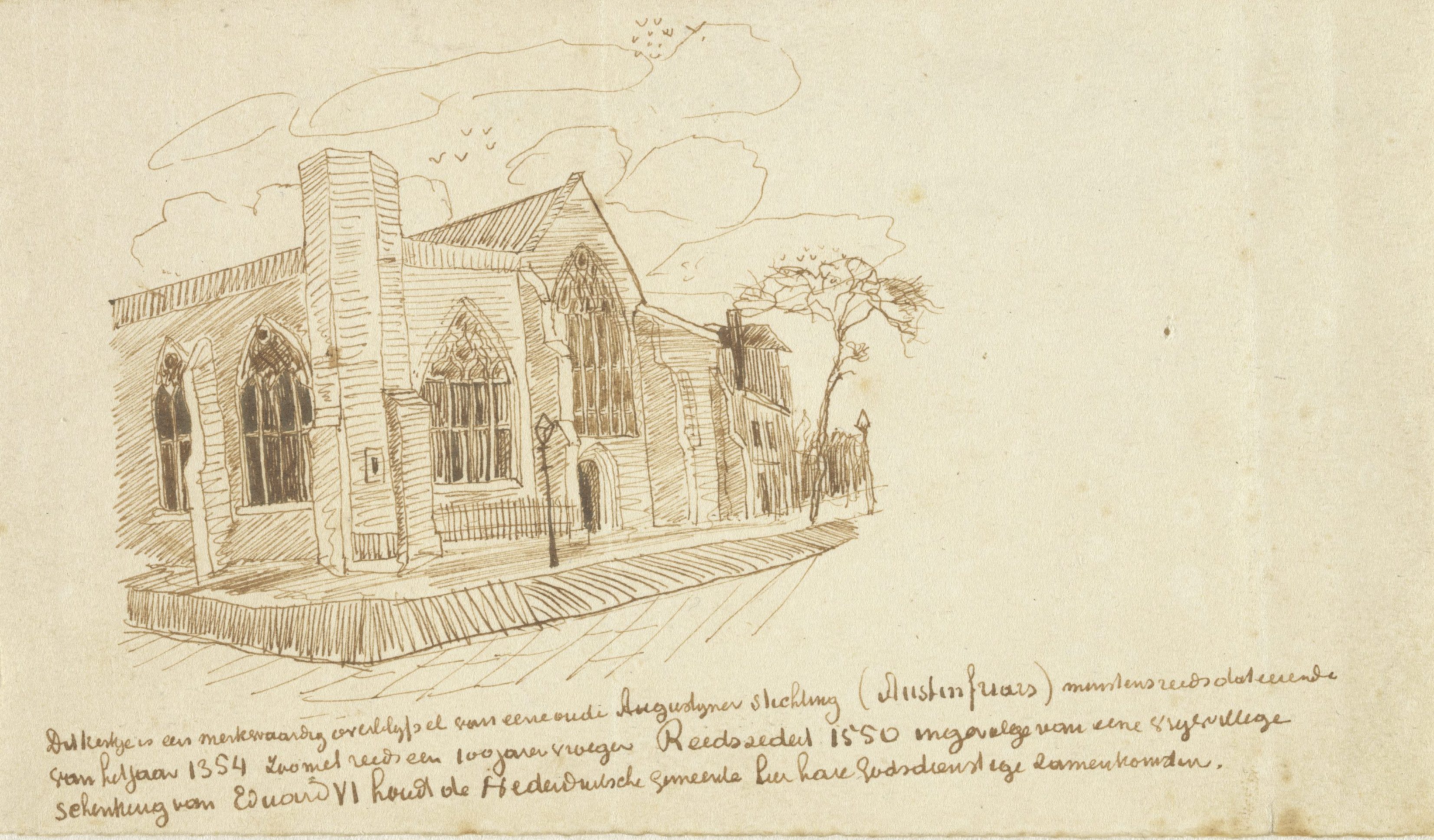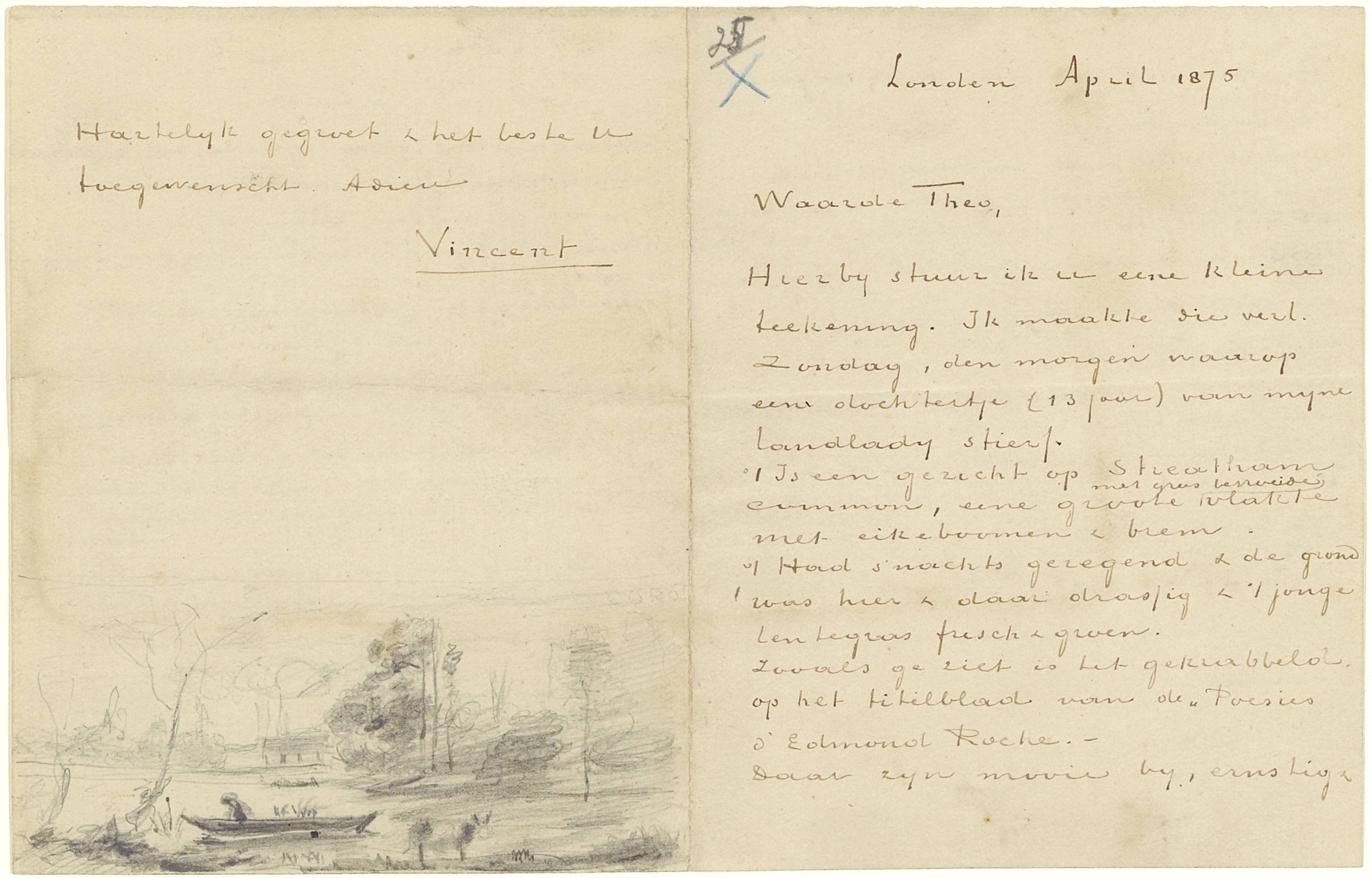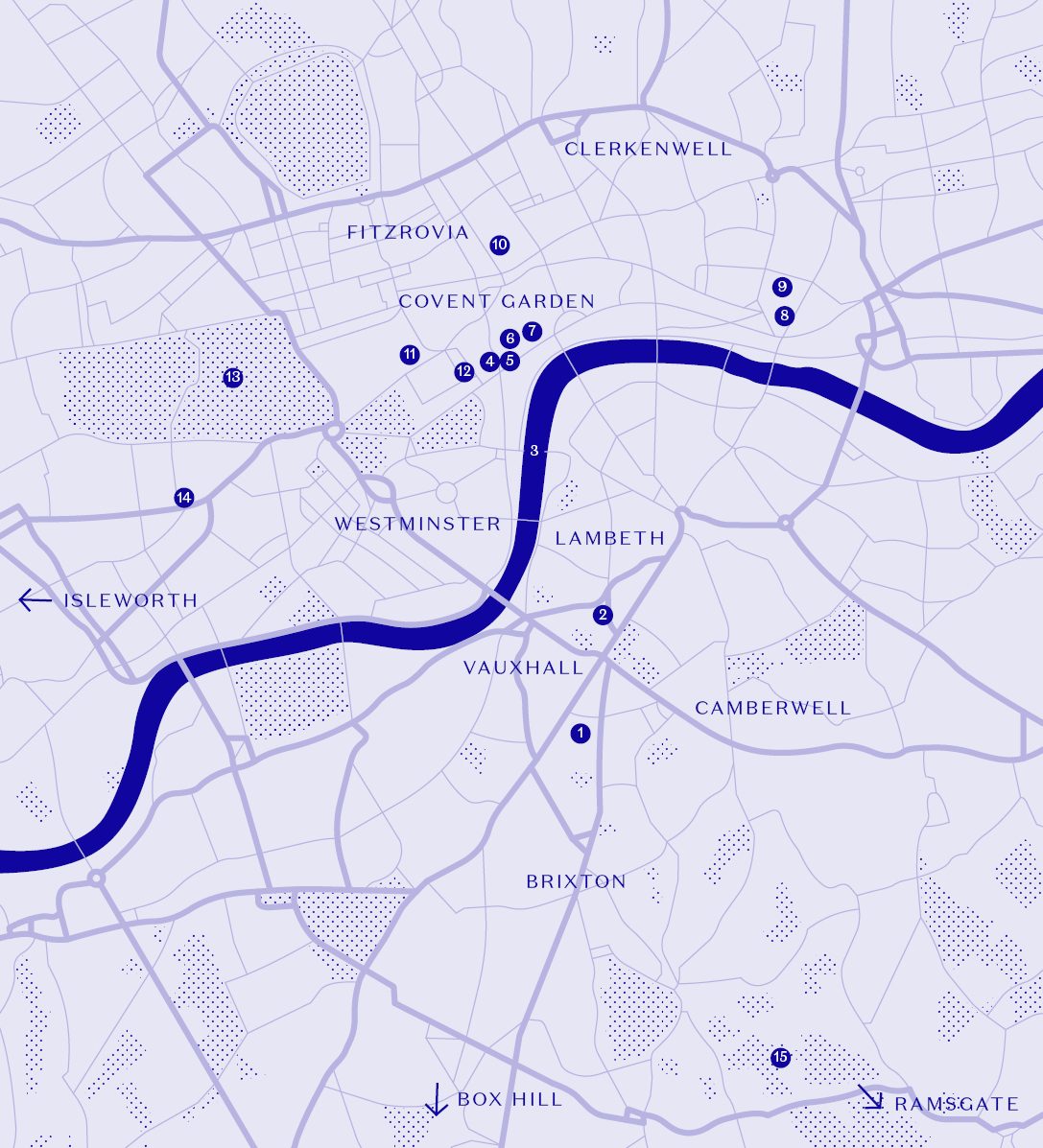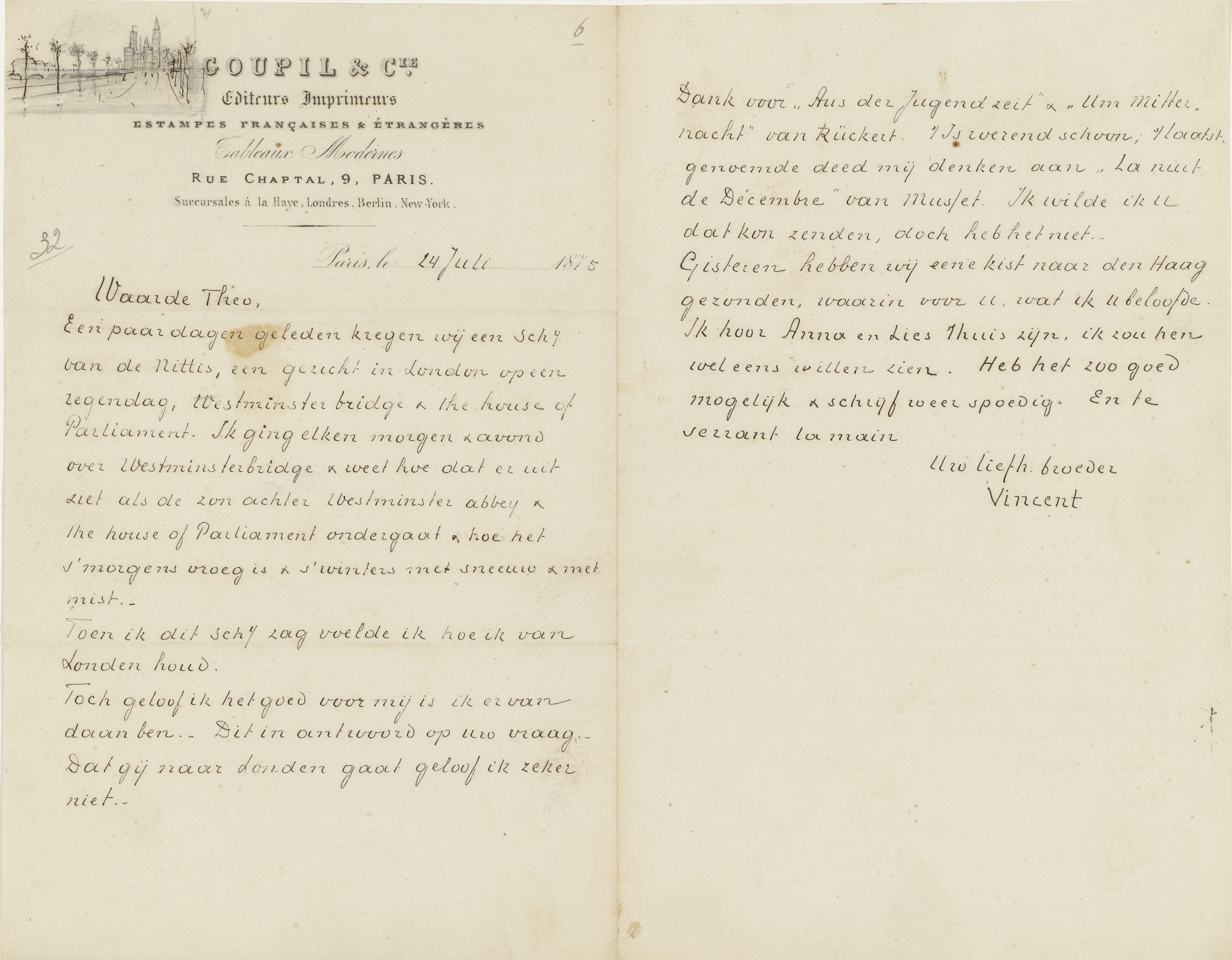Sketch of the Austin Friars Church, London, enclosed in a letter from Vincent van Gogh to unknown, London, 1873-1874.

Arriving at Hackford Road
“Things are going well for me here, I have a wonderful home and it’s a great pleasure for me to observe London and the English way of life…”
– Vincent van Gogh to Theo van Gogh
September 1873
Between August 1873 and September 1874, a young Vincent van Gogh took lodgings at 87 Hackford Road. It was here in London that Van Gogh became deeply inspired by British literature and art.
At the age of 20, Vincent van Gogh was transferred from the Dutch branch of art dealers Goupil and Cie. in the Hague to its English location in Covent Garden. This was Van Gogh’s first time living and working in a new country, and his first foray into a foreign culture.
After living in several houses in and around London, Van Gogh finally settled into a room at 87 Hackford Road, an 1820s Georgian terrace in Stockwell. He shared the residence with his widowed landlady Mrs. Ursula Loyer, her daughter Eugenie Loyer, and Samuel Plowman. It is rumoured that Van Gogh fell in love with Eugenie, yet his affections were not returned.
Letter from Vincent van Gogh to Theo van Gogh with sketch of Landscape at Ville-d’Avray, London, 1875. In this letter, Vincent writes that he enclosed a sketch of Streatham Common, but the drawing here is a copy of an etching by Camille Corot titled "Ville d'Avray : l'étang au batelier, 1862".

Walk to Work
“I enjoy the walk from home to the office and in the evening from the office back home. It takes about three-quarters of and hour.”
– Vincent van Gogh to Theo van Gogh
September 1873
Van Gogh’s descriptive and frequent letters to his family reveal that he developed a strong affinity for the Loyers and for London itself. An avid walker, Van Gogh enjoyed exploring the city by foot, and visited many of London’s cultural institutions and parks. He also walked to his office in Covent Garden from the house as often as he could.
Van Gogh’s London
1. 87 HACKFORD ROAD
2. BOARDING HOUSE PARKER
3. WESTMINSTER BRIDGE
4. THE NATIONAL GALLERY
5. THE GRAPHIC
6. GOUPIL AND CIE II
7. GOUPIL AND CIE I
8. GLADWELL GALLERY
9. AUSTIN FRIARS
10. BRITISH MUSEUM
11. ROYAL ACADEMY OF ARTS
12. VAN WISSELINGH AND COTTIER
13. HYDE PARK
14. V&A MUSEUM
15. DULWICH PICTURE GALLERY

Anna’s Visit
“Anna and I arrived in London safe and sound…It’s wonderful for me to walk with her through the streets in the evening; I then find everything here just as beautiful as I did when I first arrived.”
– Vincent van Gogh to Theo van Gogh
July 1874
In July 1874, Vincent brough his sister Anna Van Gogh with him to 87 Hackford Road after a visit home to the Netherlands. We know from a letter their father wrote to Theo in August 1874 that ‘Anna writes about the Loyer ladies – they are good people who try to make things as agreeable as possible for us…Last evening Vincent hung up a whole lot of prints. Altogether it’s cheerful and pleasant.’
However, it is during this time that Anna becomes concerned about her brother and the Loyer family, and she moves out shortly after arriving. Although we don’t know the circumstances of his departure, Vincent himself moves out of 87 Hackford Road abruptly a few weeks later.
While Vincent did not explicitly write about vacating Hackford Road, Anna had written about his leaving the residence to Theo and their parents. Their mother, Anna Carbentus van Gogh, even goes as far to write to Theo ‘Vincent will also not have had it easy at the Loyers’s – I’m glad he’s no longer there, there were too many secrets there and no family like ordinary people, but he will surely have been disappointed by them and his illusions will not have been realised – real life is different from what one imagines.’
Letter from Vincent van Gogh to Theo van Gogh with sketch of Westminster Bridge, Paris, 1875.

British Influences
“I have a rich life here, ‘having nothing, yet possessing all things’. Sometimes I start to believe that I’m gradually beginning to turn into a true cosmopolitan, meaning not a Dutchman, Englishman or Frenchman, but simply a man.”
– Vincent van Gogh to Caroline van Stockum-Haanebeek
February 1874
Although it took him a while to engage with English painting, Van Gogh developed a great appreciation for English art and literature. He was especially drawn to the etchings of Gustav Dore, which often depicted the bleak reality of London’s lower classes at the turn of the century, as well as illustrations in The Graphic, a weekly newspaper. Coupled with his admiration of British writers such as Charles Dickens, Van Gogh’s interest in the daily lives of the city’s poorer and working class inhabitants would have a profound impact on his work later in his career.
Read More
Visit our ‘Library’ to read more about Van Gogh’s stay, with contributions from author and art historian Willem-Jan Verlinden.